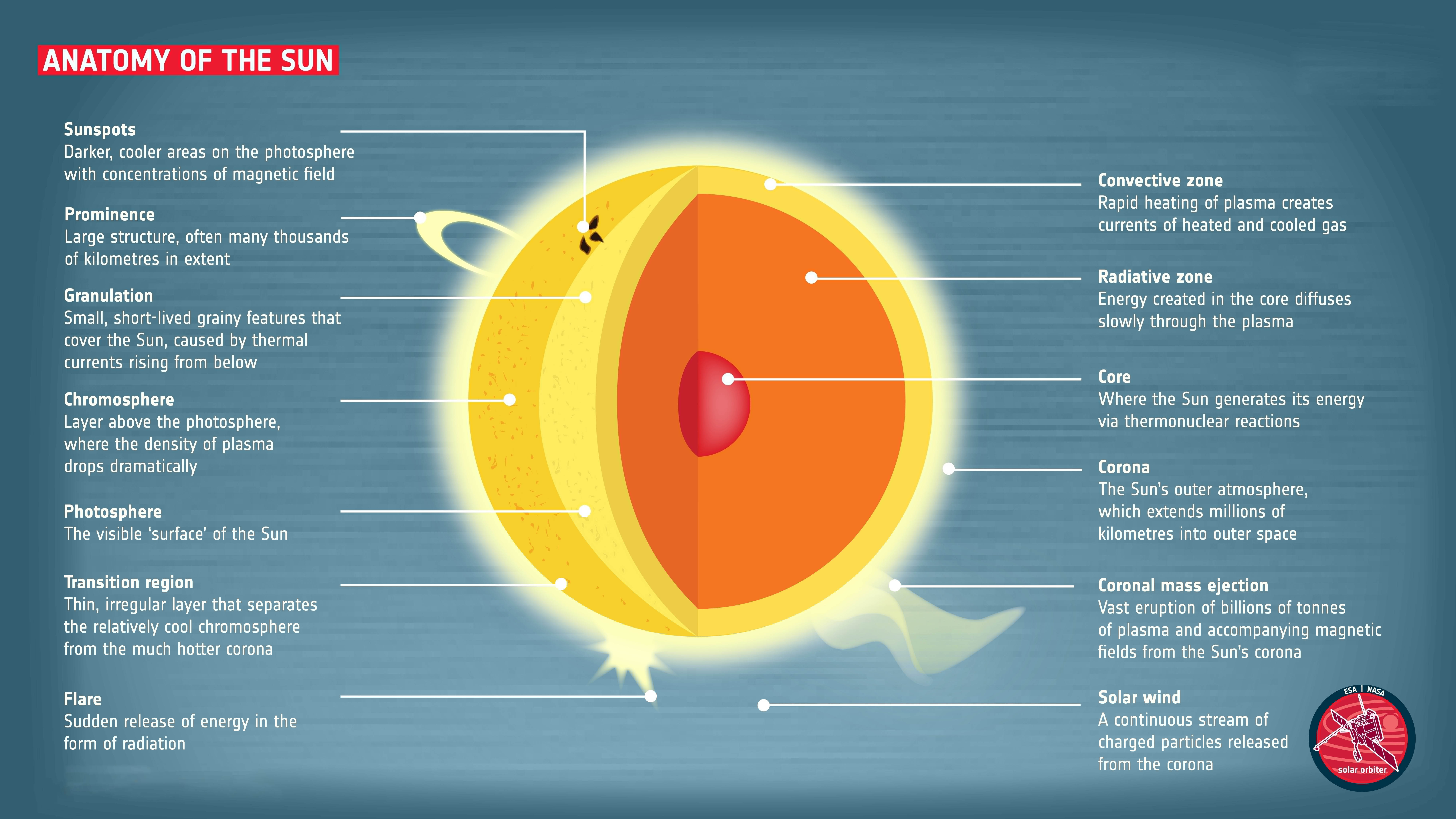Important Facts For Prelims
Coronal Mass Ejections
- 14 Jun 2023
- 4 min read
Why in News?
Researchers have been closely monitoring the ongoing changes in the energy state of the solar eruption's core that occurred on July 20, 2017, and have made an intriguing discovery.
- Despite the eruption expelling highly magnetized plasma from the solar corona into space, the core has maintained a consistently stable temperature. This finding holds promise for enhancing our comprehension of the potential impact of such eruptions on Earth's communication systems.
What are the Findings of the Study?
- The Coronal Mass Ejections (CMEs) core maintained a constant temperature as it propagated from 1.05 to 1.35 R sun, despite the expected adiabatic cooling due to the expansion of the core.
- The expression "1.05 to 1.35 Rsun" refers to a range of values that represent the size or radius of the Sun. The object being described has a radius ranging from 1.05 times the radius of the Sun (Rsun) to 1.35 times the radius of the Sun.
- The expansion of CME core behaves more like an isothermal than an adiabatic process.
- An isothermal process is a type of thermodynamic process in which the temperature of a system remains constant.
- An adiabatic process happens when there is no heat transfer between the system and its surroundings.
What are Coronal Mass Ejections?
- Coronal Mass Ejections (CMEs) are large-scale eruptions of charged particles (plasma) and magnetic fields from the solar atmosphere into space. They can disrupt a range of ground- and space-based technologies and satellites on Earth.
- The evolution of thermodynamic properties of CMEs, such as temperature and density, is crucial to understanding their impact on communication systems on Earth.
- There is a wide range of plasma temperatures within CMEs, from cold chromospheric material (around 104 K) to hot plasma (around 107 K).
- When CMEs propagate, several processes can exchange energy (electrical, kinetic, potential, thermal, and so on.), thereby heating or cooling the plasma. Understanding CMEs will help our ability to monitor space weather.
What is India’s Solar Mission?
- The Visible Emission Line Coronagraph (VELC) onboard Aditya-L1, India's first solar mission, will perform both spectroscopy and imaging of CMEs in the inner corona and provide new insights into the evolution of CME thermodynamic properties in the inner corona.
UPSC Previous Year Question (PYQ)
Prelims
Q. In order of their distance from the Sun, which of the following planets lie between Mars and Uranus? (2008)
(a) Earth and Jupiter
(b) Jupiter and Saturn
(c) Saturn and Earth
(d) Saturn and Neptune
Ans: (b)
Q. The increasing amount of carbon dioxide in the air is slowly raising the temperature of the atmosphere, because it absorbs (2012)
(a) the water vapour of the air and retains its heat
(b) the ultraviolet part of the solar radiation
(c) all the solar radiations
(d) the infrared part of the solar radiation
Ans: (d)
Q. The terms ‘Event Horizon’, ‘Singularity’, ‘String Theory’ and ‘Standard Model’ are sometimes seen in the news in the context of (2017)
(a) Observation and understanding of the Universe
(b) Study of the solar and the lunar eclipses
(c) Placing satellites in the orbit of the Earth
(d) Origin and evolution of living organisms on the Earth
Ans: (a)







